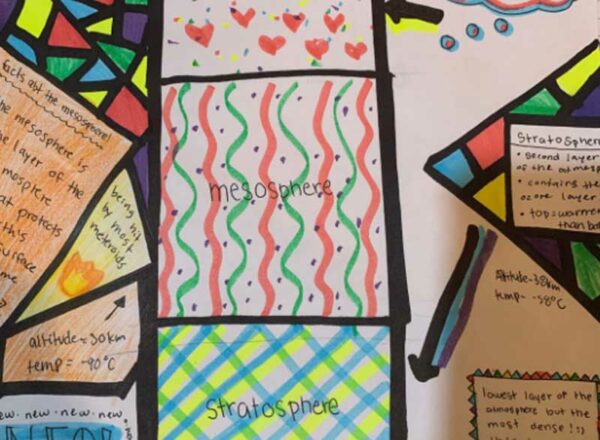By Jane Zagajeski, Science Department Chair
The science program at The Elisabeth Morrow School has always prioritized depth of understanding and the process of doing science and engineering, along with learning science content. Our goal is to continue this philosophy of science education in our students’ homes.
In some ways, teaching science content is the easiest strand to reimagine in remote learning. The Morrow House students have a great textbook series, Pearson Interactive Science, that we continue to use. In Chilton House and Little School, teachers create their own videos or direct students to the wealth of age-appropriate science resources available online. Depending on the class, students access assigned content independently and then discuss it in Google Meets, the entire class reads and interprets information collaboratively, or students respond individually via SeeSaw or Google Classroom to get feedback from their teacher.
At first, I had the impression that doing labs, really engaging in the process of science, would be difficult to do remotely. Now, I believe that this is really just a huge engineering design challenge, waiting for teachers to propose solutions.
There are certainly some labs that EMS students would normally do in class that cannot be replicated at home for safety reasons or equipment limitations. In the world of remote learning, EMS science teachers are selecting the data collection and engineering experiences that can be modified for students to do at home. For example, in just one week in April, EMS fifth-graders began documenting seasonal change in a “spot” outside their home or from a window; sixth-graders measured, created, and presented scale models of the atmosphere, and eighth-graders investigated how activity affected their heart rate.
The real payoff in science education is creating the opportunity for students to make connections, linking their lab experiences to specific science content and to the big picture ideas of science.
A seemingly small revelation can point to a deeper understanding, such as a sixth-grader reflecting that building their model now makes them realize how small the part of the Earth’s atmosphere we experience actually is. The fifth-graders will soon explain the seasonal changes they document in terms of the sun’s energy, the water cycle, and how our position in space causes seasons. The eighth-graders connected their findings to the function of the circulatory system, cellular respiration, and homeostasis.
Thinking even bigger, both the fifth- and eighth-grade experiences inform students about the crosscutting concepts of systems and stability and change at two very different scales.
Want more science? Here are links to home science resources and ideas:
Resources for Science Learning – CH and LS
Resources for Science Learning – MS
There's No Better Time to Support Your Child's Education
Every time you donate to one of Elisabeth Morrow's dedicated funds, you help enrich the daily experiences of our community on campus. STEAM spaces are improved, library catalogues expanded, scholarships are funded, and teachers are hired. Every day, you can see the impact your generous donations have on campus.


